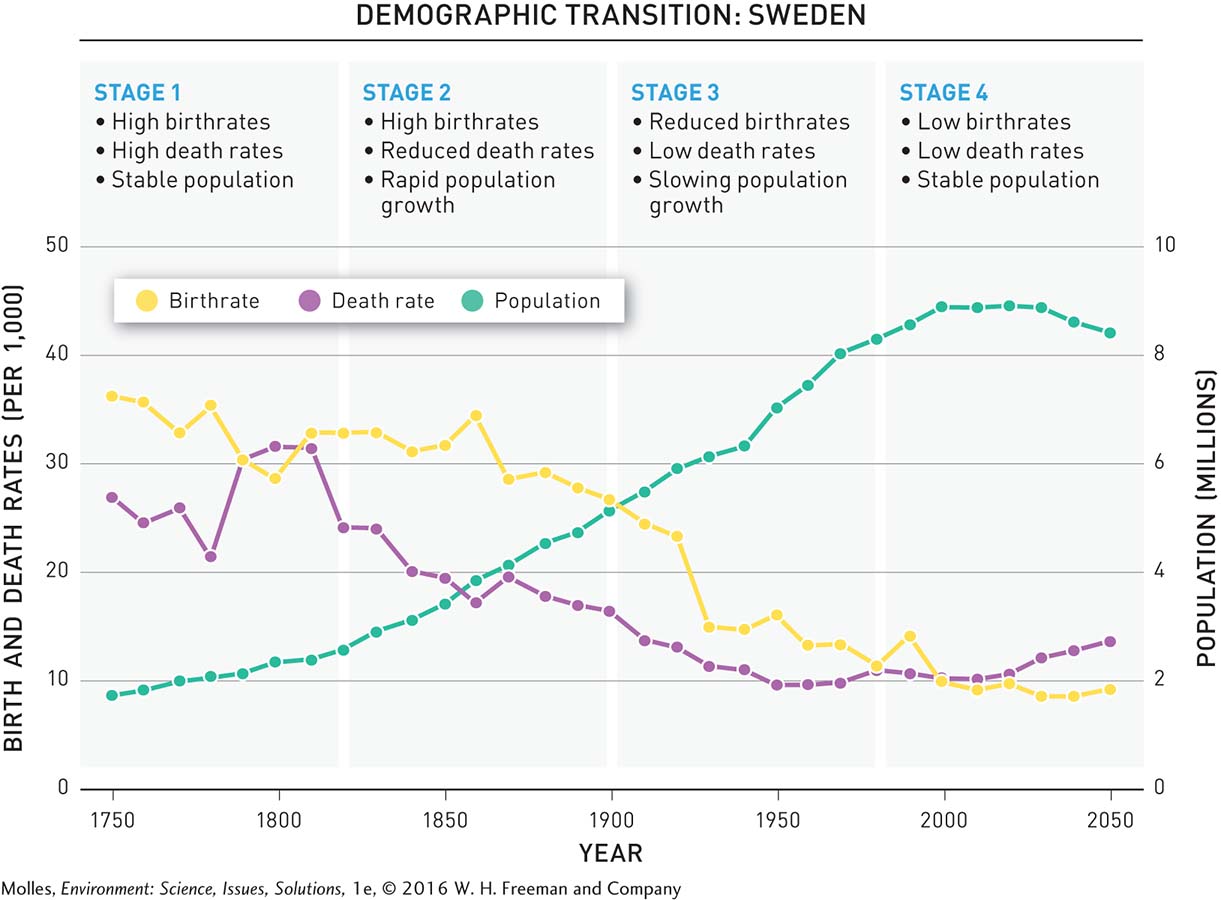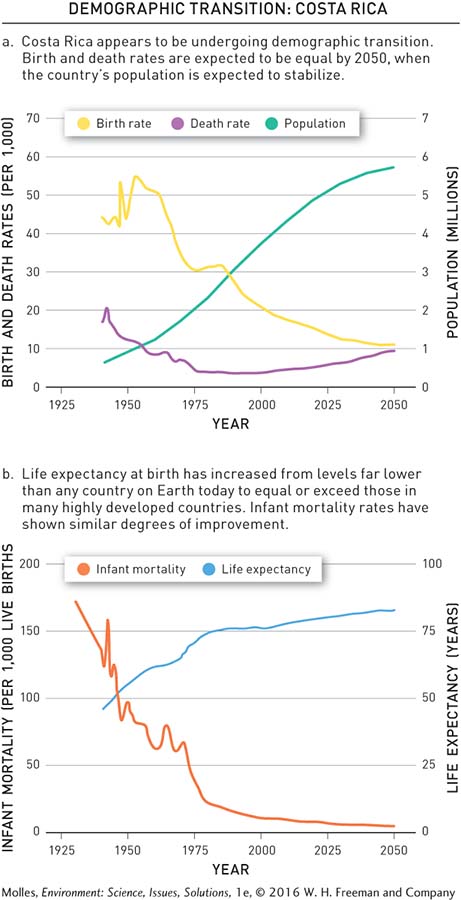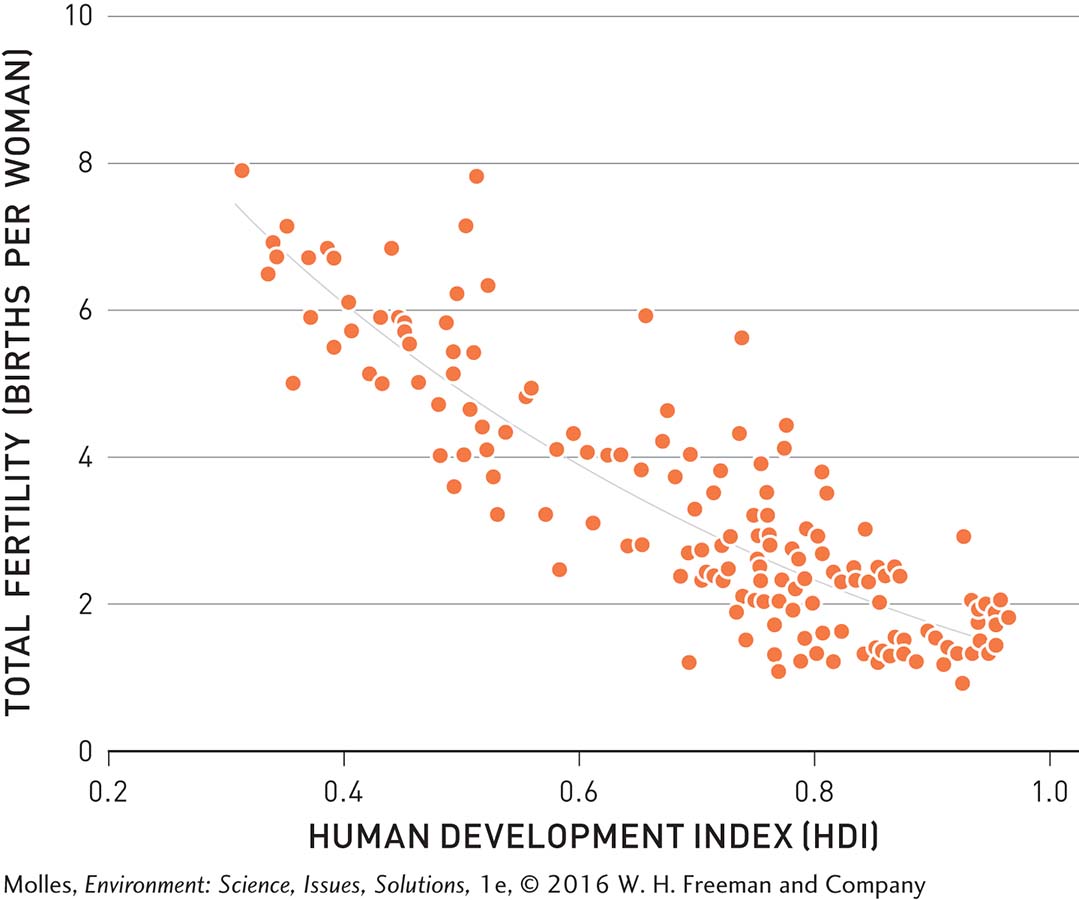5.9 Human development is associated with lower fertility and reduced emigration
demographic transition
A theory proposing that, with improved living conditions, human populations will undergo a gradual change from an earlier state of high death rates and birthrates to a state of low death rates and birthrates, with improved living conditions. The demographic transition model fits the history of today’s developed countries well.
One question that development experts ponder is when Somalia and other sub-

During stage 3, death rates keep dropping—

Costa Rica was one of the first countries in the world to institute free and obligatory education for all (starting in 1869). Today, Costa Rica has one of the highest literacy rates in Latin America—
Populations stabilize at stage 4 when birthrates approximately balance death rates. The developing countries currently in stage 3 of demographic transition are expected to reach stage 4 sometime during the 21st century. For example, a Central American country rapidly approaching stage 4 is Costa Rica (Figure 5.28). As Figure 5.28a shows, Costa Rica’s population is expected to stabilize by the year 2050. The quality of life in Costa Rica has improved dramatically as it has passed from stage 2 to 3 and approaches stage 4. By 2014 life expectancy at birth in Costa Rica increased to 78, two years lower than in the United States, and its total fertility rate had fallen to 1.9 births, lower than in the United States in 2014 and equal to that in Iceland (Figure 5.28b).


What factors may sustain high rates of fertility in some populations that have attained a high level of development?
While demographic transition theory explains the history of today’s highly developed countries, demographers have suggested that some nations may be trapped in a lower state of development by poverty, overpopulation, and low literacy. That’s why investing in development appears to help stabilize the populations of such countries (Figure 5.29 and Figure 5.30).


Educating and Empowering Women
Whether in Asia, Africa, the Americas, or Europe, women with more education and who are sufficiently empowered to make critical choices in their lives bear fewer children. There are several reasons for this pattern. First, educated women marry later and they wait longer to have their first child. In addition, educated women are more likely to use contraceptives and are more receptive to family-
Easing Migration Pressures
As we learned earlier, population density depends on not only population growth within a country’s borders, but also immigration from other countries. One way to reduce migration pressure is to lessen economic disparities across borders. Such investment occurred in Western Europe following the expansion of the European Union (EU) in 1986 to include some of the then poorer countries of Western Europe, including Greece, Ireland, Portugal, and Spain. The EU invested heavily in their economic infrastructure; as a result of such investments and local entrepreneurship, these countries entered the 21st century much better off economically. As a consequence of improved opportunities at home, fewer people emigrated from these nations; instead, they became a destination for immigrants. However, the economic downturn of 2008, which contributed to an economic crisis across Europe, again sent many residents of these countries abroad, seeking better opportunities elsewhere.
At the forefront of these developments was Ireland, which quickly developed into one of the strongest economies anywhere. In 2008 Ireland ranked 5th among the nations of the world on its Human Development Index score. At least partly influenced by improved economic prospects at home, the status of Ireland changed from being a major source of immigrants to being a destination for immigrants from around the world. However, the economic recession near the end of 2008 greatly reduced immigration to Ireland and by 2009 more people were again leaving Ireland than entering. However, with economic recovery, immigration to Ireland began increasing again after 2010; by 2015 one-
Think About It
What do you think living conditions are like during the four stages of demographic transition?
How could you speed up the pace of demographic transition? Be specific.
Can you imagine a circumstance in which a country underwent significant development but did not evolve into a society in which both death rates and birthrates were low? Explain your response.